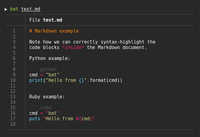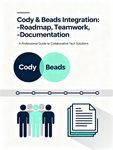
Terminal Upgrades for CLI Development
Eleanor Berger shares the terminal tools she uses alongside Claude and other CLI agents.
Thoughts on modern web development, AI-powered tools, cloud architecture, and technology leadership from my experience building scalable solutions

Eleanor Berger shares the terminal tools she uses alongside Claude and other CLI agents.

Complete Phase 1 implementation of Cody-Beads integration with 4,200+ lines of documentation, strategic Q4 2025-Q1 2026 roadmap, and team rollout materials ready for deployment.

Three Web Component demos exploring Shadow DOM isolation, CSS 3D rendering, and smart iframe management with Playwright testing.

Infrastructure overhaul with Bun migration, intelligent path-based builds, comprehensive testing, and enhanced deployment workflows.

Beads offers distributed task management for AI agents with dependency-aware DAGs, git-backed persistence, and agent-friendly workflows that integrate seamlessly with development workflows.

Amp coding agent features Handoff for context transitions, message queueing, scoped instructions, and extensible toolboxes for enhanced developer workflow.